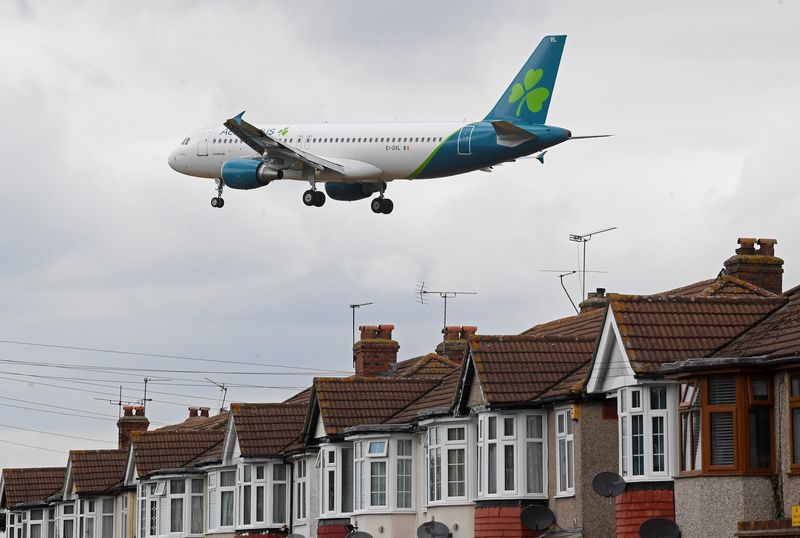By David Shepardson
WASHINGTON (Reuters) -Irish airline Aer Lingus received final U.S. approval on Monday to join a transatlantic joint venture with other major airlines.
The U.S. Transportation Department in November granted tentative approval for Aer Lingus to join the venture consisting of American Airlines, British Airways, OpenSkies, Iberia and Finnair.
The announcement will give the joint venture control of more than half of the U.S.-Ireland passenger flight market. The approval will integrate Aer Lingus into the venture’s network planning, pricing and sales.
Aer Lingus did not immediately comment.
Aer Lingus controls 44% of the U.S.-Ireland flight market, a figure that will rise to 60% for the alliance.
In 2015, International Consolidated Airlines Group (IAG), the parent company of British Airways, Iberia and OpenSkies, acquired Aer Lingus. The group petitioned in 2018 to allow Aer Lingus to join the alliance.
Despite the alliance’s majority market share, the U.S. regulator noted steps that it said would support competition.
As a condition of approval, the department proposed the venture maintain commitments to release landing and takeoff gate slots at London airports to competitors. Those were imposed when the alliance was first approved in 2010.
In addition, the Transportation Department noted the presence of a strong competitor outside the alliance. It said the second-largest carrier in the Irish-U.S. market, low-cost airline Norwegian, “has shown an aggressive ability to challenge established carriers in the transatlantic market with its low-fare pricing model.”
The department also argued that new aircraft models would allow airlines to fly transatlantic routes with fewer seats and lower costs.
(Reporting by David Shepardson; Editing by Chris Reese and Peter Cooney)


















